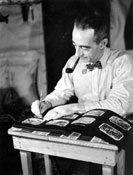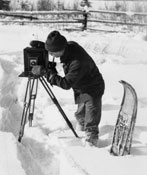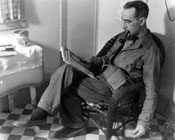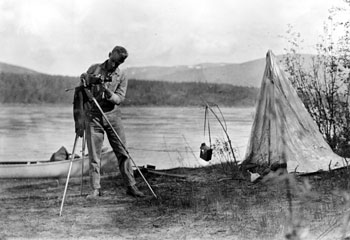|
Claude Tidd, “Camera Fiend”

Claude kept meticulous albums, which are works of art in themselves.
Yukon Archives: #8123

The intrepid photographer sets his camera up in the snow. Note the pipe, which
seems to be present in more photos of Claude than not!
Yukon Archives: #8526
Of course, back in the pre-digital days, the cumbersome technology
on which a photographer relied could create problems for anyone who lived
and worked in the wilderness. Far from any hardware store, let alone
a camera store, Claude was forced into the role of innovator and inventor,
whether for a power source and lens for his enlarger, or for dust filters
for developing. He met such challenges handily, then reverted to his
modest self: “And although I havent
succeeded in turning out any Salon-quality prints yet, some of my results
have given us and our friends much pleasure, while the odd one has even
pleased an editor occasionally.”

Claude creating a self-portrait in his Mayo kitchen. His hand is near the
floor, pushing a button to take the photo.
Yukon Archives: #91/112 #454, PHO 606
|



















